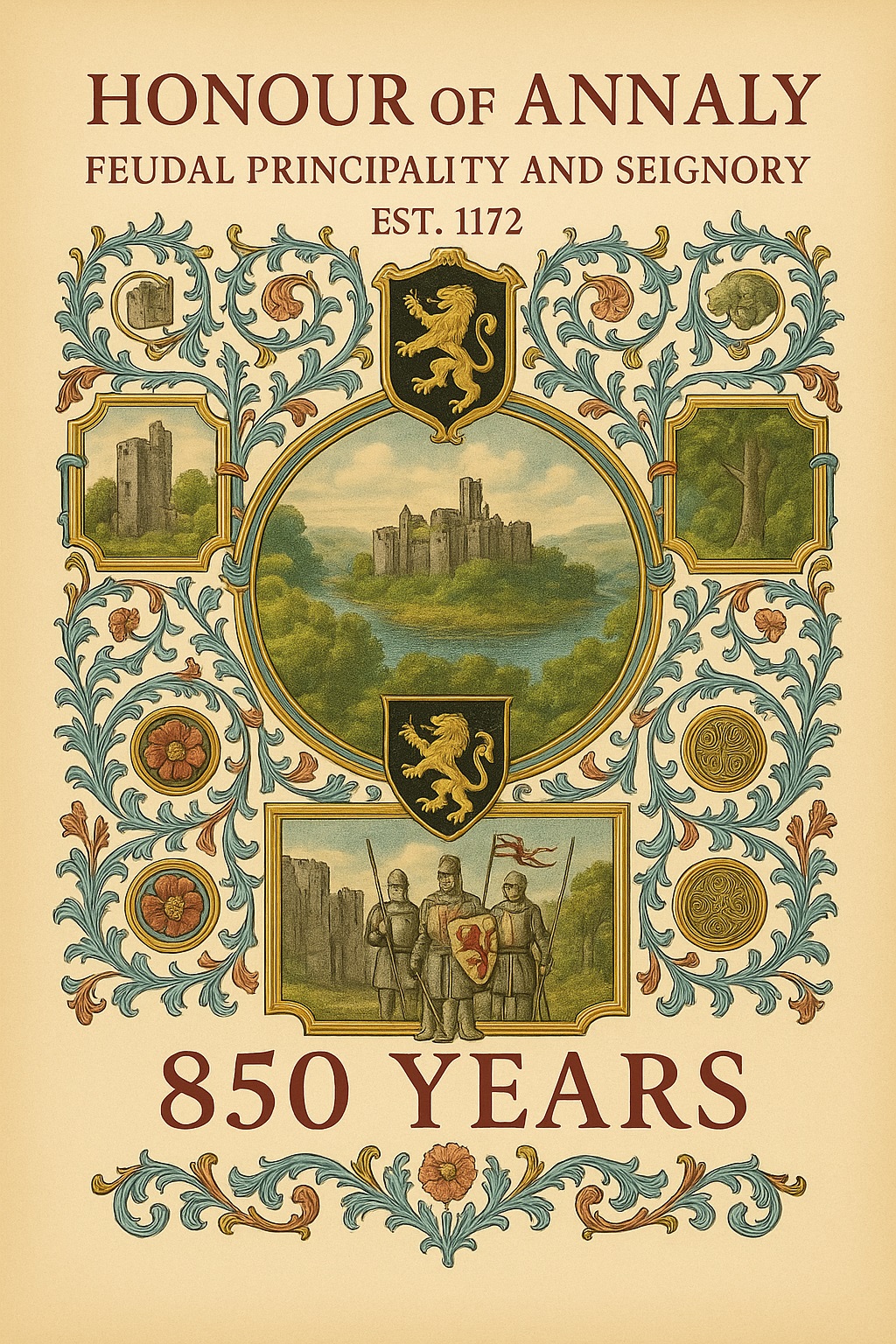Honour of Annaly - Feudal Principality & Seignory Est. 1172

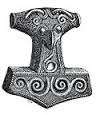



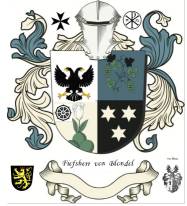
The Honour & Seignory of Annaly LongfordCounts of Meath Annaly Longford – Feudal Principality
|
| Year / Reign | Granting Authority | Instrument Type / Record | Territory or Rights Conveyed | Effect / Connection to Baron Delvin |
|---|---|---|---|---|
| 1172 – Henry II | King Henry II of England | Royal Charter establishing the Liberty of Meath | Entire Kingdom of Meath granted to Hugh de Lacy, with palatine (quasi-regal) powers. | Foundation of the Palatinate; later Gilbert de Nugent (ancestor of Barons Delvin) became feudal tenant and hereditary sub-palatine. |
| c. 1202 – John I | King John | Sub-infeudation by de Lacy to Gilbert de Nugent | Feudal Barony of Delvin, including Fore and western Meath lands extending into Teffia–Annaly. | Establishes Nugent family as feudal lords; origin of Barony of Delvin. |
| 1211 – John I / Henry III | Crown confirmation | Foundation of Abbeylara (de Leathrath) by Richard Tuite under de Lacy–Delvin suzerainty | Cistercian abbey and barony center. | Religious caput of the Fore–Delvin estates; later absorbed under Nugent tenure. |
| 1541 (32 Henry VIII) | King Henry VIII | Letters Patent – Grant of the Priory of Fore and dependent manors | Grants to Richard Nugent, 13th Baron Delvin: the site of Fore Abbey with all its manors, lands, advowsons, courts baron, and palatine rights in Westmeath and Longford (Annaly). Includes Fore, Castle Richard, Liserdowle, Moate, Kilbride, Killashee, Ballymahon, Rathcline, Taghshinny, and Abbeyderg. | Re-establishes feudal seignory and palatine jurisdiction of Nugent family over Annaly / Longford. Marks legal start of Delvin’s overlordship in Annaly. Liserdowle is the seat of the Annaly Kingdom |
| 1552 (Edward VI) | King Edward VI | Royal Grant – “Holy Islands in Longford and Westmeath” | Grants to Richard Nugent, Baron Delvin: the Holy Island of Inchcleraun (Saints’ Island), Inchmore, and associated fisheries and lands in Lough Ree. | Extends Delvin lordship over the sacred islands of Annaly, reinforcing spiritual and territorial sovereignty. |
| 1557 (Philip & Mary) | Philip & Mary, Sovereigns of England & Ireland | Royal confirmation and restitution | Restores and re-confirms to Baron Delvin the lands previously held by his father, acknowledging services to the Crown. | Legal continuation of the Fore and Annaly estates under Crown sovereignty. |
| 1565 (Elizabeth I) | Queen Elizabeth I | Royal Patent – “Captaincy of Slewght William” (Slewght-Uilliam, i.e. Eastern Annaly) | Creates and confirms Richard Nugent, Baron Delvin as Captain of the Country of Slewght William, including Mostrim (Edgeworthstown), Ardagh, Granard, Lisryan, and Teffia-border territories. | Establishes a hereditary feudal and military captainship, giving the Delvin barony princely authority over Annaly and Teffia; effectively the Count Palatine of Meath extended westward. |
| 1603 (James I) | King James I | Letters of recognition and favor | Recognition of Christopher Nugent, 14th Baron Delvin as loyal subject after Tudor wars. | Continues hereditary rights of Nugent/Delvin in Annaly and Meath. |
| 1605 (James I) | King James I | Royal Grant – Markets and Courts Baron in Longford Town | Grants Richard Nugent, Lord Delvin rights to hold weekly markets and courts baron in Longford, the shire capital. | Confirms palatine jurisdiction and urban lordship over Longford; establishes Delvin’s seignorial courts and commercial sovereignty in the region. |
| 1621–1622 (James I) | King James I | Creation of Earl of Westmeath | Elevates Richard Nugent, 1st Earl of Westmeath (15th Baron Delvin). | Consolidates all former Delvin palatine, baronial, and captaincy lands into a hereditary Earldom and County Palatine dignity. |
🕰️ Historical Arc of Delvin–Annaly Jurisdiction
-
1172 → 1200: Foundation of the Liberty of Meath (Palatine Charter) → Nugent sub-feudal inheritance.
-
13th–15th centuries: The Nugents of Delvin administer the Barony of Fore (including grants in capite for Granard and Abbeylara).
-
1541–1552: Crown re-grants and confirms Fore Priory and Annaly manors to Baron Delvin under Henry VIII and Edward VI.
-
1565: Elizabeth I formalizes Nugent’s Captaincy of Annaly (Slewght William) — effectively making Delvin Prince-Captain of Annaly.
-
1605: James I reconfirms Nugent’s jurisdiction and market rights in Longford, maintaining the old palatine structure under new royal suzerainty.
-
1621+: The Earldom of Westmeath institutionalizes these feudal powers as an hereditary noble dignity, linking Annaly and Teffia permanently with the House of Nugent.
🏰 Principal Territories Under Delvin / Westmeath Jurisdiction
-
Religious & Feudal Seats: Fore, Abbeylara, Abbeyshrule, Abbeyderg, Killashee, Taghshinny
-
Civil & Military Centers: Granard, Mostrim (Edgeworthstown), Ardagh, Longford Town
-
Holy & Ceremonial Sites: Inchcleraun (Saints’ Island), Inchmore, Lough Ree Islands, Cairn Hill, Rathcline
One Half of Annaly or Longford County was granted to Baron Delvin in 1597
In 1597, Queen Elizabeth I issued a formal directive empowering the Lord Deputy and Lord Chancellor of Ireland to grant the Baron of Delvin, his heirs, and assigns a permanent fee-farm estate consisting of castles, manors, lands, tithes, and other hereditaments in Counties Cavan (Brenny) and Longford (Annaly). These properties were to be selected from lands formerly held by individuals slain or attainted for rebellion and were to total £100 in clear annual value, with the Baron free to choose which parcels he preferred. The grants were to be held in capite by knight’s service, with the same rents or compositions previously owed to the Crown. The Queen also ordered that the Baron be given full access to official surveys and records so he could identify eligible properties, and directed that the final grants be issued under the Great Seal of Ireland. A key restriction prohibited the Baron from alienating any of the lands to “mere Irish” or to those not of English descent. Citing Delvin’s loyal and valorous service during the recent rebellion, Elizabeth further instructed that a portion of the royal forces (horse or foot) be placed under his command for operations in his territory. The letter was enrolled on June 1 by Master of the Rolls A. St. Leger.
Confirmation of Elizabeth’s Fee-Farm Grant
James I routinely validated existing title so loyal families would not lose lands after the
change of monarch. The Nugent/Delvin estates were among those explicitly confirmed by royal patent.
These confirmations appear in:
-
Patent Rolls of James I (1603–1608)
-
Grants relating to Annaly, Granard, Smere, Carnedronee, Lissardowlan, Inchcleraun, and other Longford estates
-
The Plantation of Longford grants (1608–1620), many naming Nugents directly
2. Additional Grants by James I
Beyond confirming Elizabeth’s grant, James I also made new grants to the Barons Delvin and later to the Earl of Westmeath, including:
-
1605: Market, fair, and Courts Baron rights for Longford town
-
1608–1620: Large tracts in Smere, Carnedronee, Rosduffe, Faghowry, Drumshanaly, Doonbeggan, Lisardowlan, and others
-
Grants of Inchmore Priory and Island, with explicit confirmation in the early James I patents
-
Recognition of feudal rights including “held in capite by knight’s service”
These instruments confirm that James I not only honored Elizabeth’s 1597 directive but also strengthened the Delvin holdings.
Conclusion
The 1597 Elizabethan grant was effectively reaffirmed and expanded under King James I, through multiple patents and confirmations recorded between 1603 and 1620. The Nugent/Delvin family’s authority in Annaly/Longford thus spans continuity between both Tudor and Stuart reigns.
Writs and Summons of the: Barons/Lord of Westmeath/Annaly and Longford to Attend Parliament
- 1371, John Fitz John (Baron of Delvin) was summoned to Parliament by Writ, dated at Dublin, 13th February in that Year, as Baron of Delvin:
- Later, Sir William Nugent was summoned to Parliament by Writ as Baron of Delvin, and is commonly called the First Baron of Delvin:
- Christopher the 6th Baron of Delvin, who sat in the Parliament which was held at Trim in the Reign of Richard 3d:
- Christopher was the Eighth Baron Delvin, sat in Parliament 20th Elizabeth, and died on the 17th August 1602.
- Richard the Ninth Baron of Delvin sat in Parliament in 1613 and in 1615, and by Privy Seal, dated at Westminster, 22d November 1621, he was (144.) created created Earl ofWestmeath, to him and the Heirs Male of his Body.
Below is one of the Barony Grants by King James - Including Grants in Fee Simple of: The Holy Island in Annaly, the tithes of the lands of Rathline and Cashell and tithes and rectories of the region. Castle of Monilagan or Babington, Castle and Moiety of of Newton, Island of Cloning, Lands of the Abbey of Larha, Castle of Lisnevoa.
Grants to Hold in fee farm forever in common soccage and to maintain two horseman/knights from the Pale for the defence of the kingdom.
Notation: The clause in the 1996 Deed of Transfer is legally significant because it confirms that the property conveyed — the Feudal Barony or Honour of Longford — is not land but an incorporeal hereditament, and therefore exempt from Section 112 of the Finance Act 1940. That Act imposes stamp duties and taxes on the transfer of land and interests in land; however, a feudal barony is a title of dignity and jurisdiction, not a physical estate. It is a remnant of the medieval system of landholding, existing today as an intangible right of honour and precedence. By certifying that the Finance Act does not apply, the deed establishes that this transaction concerns the transfer of a feudal dignity, not a conveyance of real property. This protects the purchasers from unnecessary property tax liabilities and ensures the barony’s treatment as a distinct legal entity — a heritable noble title rather than taxable land. The clause also provides evidence that the Irish Registry of Deeds recognized the conveyance as a lawful transfer of a feudal title in fee simple, reinforcing the continuity of the barony’s legal existence as a juridical honour, independent of any land or manor once attached to it.
Dynastic, Territorial and Jurisdictional
By virtue of Gilbert de Nugent’s marriage to Rosa de Lacy, sister of Hugh de Lacy, Lord of Meath, the Nugents, Barons of Delvin, could also assert themselves as collateral dynastic heirs of the de Lacy family, thereby inheriting symbolic legitimacy over the territories once controlled by that dynasty. While the palatine rights of Meath legally reverted to the Crown upon the extinction of the de Lacy male line, the Nugents’ bloodline connection through Rosa gave them enduring prestige and a narrative of continuity with one of the most powerful Anglo‑Norman houses in Ireland. This dynastic link reinforced their position in Westmeath and parts of Annaly/Longford, where their barony of Delvin was situated, and extended into Annaly (Longford), where Crown grants displaced the native princes and vested lands in the Nugents. Thus, the Nugents could claim both legal baronial and Honour titles in Delvin and Annaly and also dynastic descent from the de Lacy line, presenting themselves as heirs to the feudal and princely traditions of Meath and Longford even if the full palatine jurisdiction remained with the Crown.
The Honour and Principality of Annaly (Longford) is a historical jurisdictional, territorial, and dynastic dignity. Its character derives from (1) the territorial jurisdiction and liberties once exercised under the feudal Honour and Barony of Annaly; (2) the territorial identity of the ancient kingdoms of Meath, Annaly, and Teffia; and (3) the dynastic lineage of the Barons Delvin—whose ancestors include both Hugh de Lacy, Lord of Meath, and the Kings of Connacht of the O’Connor line. While these elements establish the Honour’s traditional and historical standing, they do not confer modern governmental authority and are recognized strictly within the context of historical, genealogical, and nobiliary tradition.
The Honour of Annaly–Longford is highly unusual in Irish history because its territorial boundaries have remained remarkably consistent for over 1,500 years. From the early kingdom of Teffia (5th–11th centuries) to Annaly under the O’Farrells, the region retained its ancient limits, which were later recognized intact by the Norman grant to Hugh de Lacy in 1171 as part of the Liberty of Meath. Rather than being fragmented, Annaly was gradually consolidated through royal grants to the Nugent family, Barons Delvin, during the Tudor period. When County Longford was formally shired in 1586 and finally defined in 1608 under James I, its external boundaries closely mirrored those of ancient Teffia. This continuity makes Annaly–Longford one of the rare Irish territories whose identity survived unchanged through Gaelic, Norman, and English administrative systems.
George Mentz, Esq., Seigneur of Blondel, Lord of Stoborough, and Lord of the Bailiwick of Ennerdale, carries an ancestral heritage deeply rooted in the ancient Gaelic clans of Ireland and Scotland. His lineage reflects the enduring cultural and historical traditions of the Gaels—an indigenous people whose kinship networks, dialects, and warrior aristocracies shaped the Highlands, Islands, and western coasts of Ireland for over two millennia. Through his forebears, Mentz descends from the McConnell (Mac Domhnaill / Clan Donald), McMechan, McMahon, Fenton, and Fleming clans, each associated with territories that once formed the heartlands of the Gaelic world. These families emerged from regions now known as Counties Dublin, Mayo, Galway, Kerry, Donegal, Cork, and Clare—areas long recognized as strongholds of Gaelic identity, law, and custom.
As a descendant of the Mac Domhnaill (McConnell) line—a branch of the famed Clan Donald—Mentz’s heritage connects to one of the most powerful dynastic houses of medieval Scotland and Ireland. The MacDonnells, like many Gaelic families, maintained lordships on both sides of the Irish Sea, blending Highland Scottish and Northern Irish identities. His ancestry also ties him to respected Scots-Irish families including Kerr, Douglas, Campbell, Stewart, Drummond, and Kirkpatrick, whose histories span the Hebrides, Ulster plantations, and the Scottish Borders. In Ireland, familial connections to Boyle, De Barry, Power, Darcy/D’Arcy, FitzGerald of Leixlip, FitzJohn Barry, MacCarthy Reagh, and Mac Fineere Donnel MacCarthy intertwine his lineage with both Norman-Irish and ancient Gaelic aristocracies.
This multifaceted lineage reveals an extraordinary tapestry—Scottish, Irish, English, German, French, Italian, Egyptian, Sicilian, Anatolian, Dravidian, and Native American—demonstrating a depth of ancestral migration that crosses continents and civilizations. Yet, at its cultural center, Mentz’s heritage remains deeply indigenous to the Gaelic world of Ireland and Scotland, linking him directly to the clans, septs, and noble families who shaped the history, law, and identity of the Celtic West.
Through this lineage, Counselor George Mentz, Esq. not only preserves the memory of his ancestors but also embodies the living continuity of Gaelic tradition—an inheritance rooted in clan leadership, territorial stewardship, and centuries-old customs that continue to resonate through his roles as Seigneur of Blondel and Lord of Ennerdale and Stoborough.
About Longford Feudal Prince Statutory Declaration by Earl Westmeath Kingdoms of County Longford Pedigree of Longford Annaly What is the Honor of Annaly The Seigneur Lords Paramount Ireland Market & Fair Chief of The Annaly Lord Governor of Annaly Prince of Annaly Tuath Principality Feudal Kingdom Fons Honorum Seats of the Kingdoms Clans of Longford Region History Chronology of Annaly Longford Hereditaments Captainship of Ireland Princes of Longford News Feudal Princes Principality of Cairbre-Gabhra Count of the Palatine of Meath 850 Years Irish Property Law Manors Castles and Church Lands A Barony Explained Moiety of Barony of Delvin Spiritual & Temporal Islands of The Honour of Annaly Longford Blood Dynastic Water Rights Annaly Writs to Parliament Moiety of Ardagh Dual Grant from King Philip of Spain Rights of Lords & Barons Princes of Annaly Pedigree Abbeys of Longford Styles and Dignities Ireland Feudal Titles Versus France & Germany Austria Sovereign Title Succession Grants to Delvin Lord of St. Brigit's Longford Abbey Est. 1578 Feudal Barons Water & Fishing Rights Ancient Castles and Ruins Honorifics and Designations Kingdom of Meath Feudal Westmeath Seneschal of Meath Lord of the Pale Irish Gods The Feudal System Baron Delvin Kings of Hy Niall Colmanians Irish Kingdoms Order of St. Columba Chief Captain Kings Forces Commissioners of the Peace Tenures Abolition Act 1662 - Rights to Sit in Parliament Contact Law of Ireland List of Townlands of Longford Annaly English Pale Court Barons Lordships of Granard Irish Feudal Law Datuk Seri Baliwick of Ennerdale Moneylagen Lord Baron Longford Baron de Delvyn Longford Map Lord Baron of Delvin Baron of Temple-Michael Baron of Annaly Kingdom Annaly Lord Conmaicne Baron Annaly Order of Saint Patrick Baron Lerha Granard Baron AbbeyLara Baronies of Longford Princes of Conmhaícne Angaile or Muintir Angaile Baron Lisnanagh or Lissaghanedan Baron Moyashel Baron Rathline Baron Inchcleraun HOLY ISLAND Quaker Island Longoford CO Abbey of All Saints Kingdom of Uí Maine Baron Dungannon Baron Monilagan - Babington Lord Liserdawle Castle Baron Columbkille Kingdom of Breifne or Breny Baron Kilthorne Baron Granarde Count of Killasonna Baron Skryne Baron Cairbre-Gabhra AbbeyShrule Events Castle Site Map Disclaimer Irish Property Rights Indigeneous Clans Dictionary Maps Honorable Colonel Mentz Valuation of Principality & Barony of Annaly Longford
www.BaronLongford.com * www.FiefBlondel.com
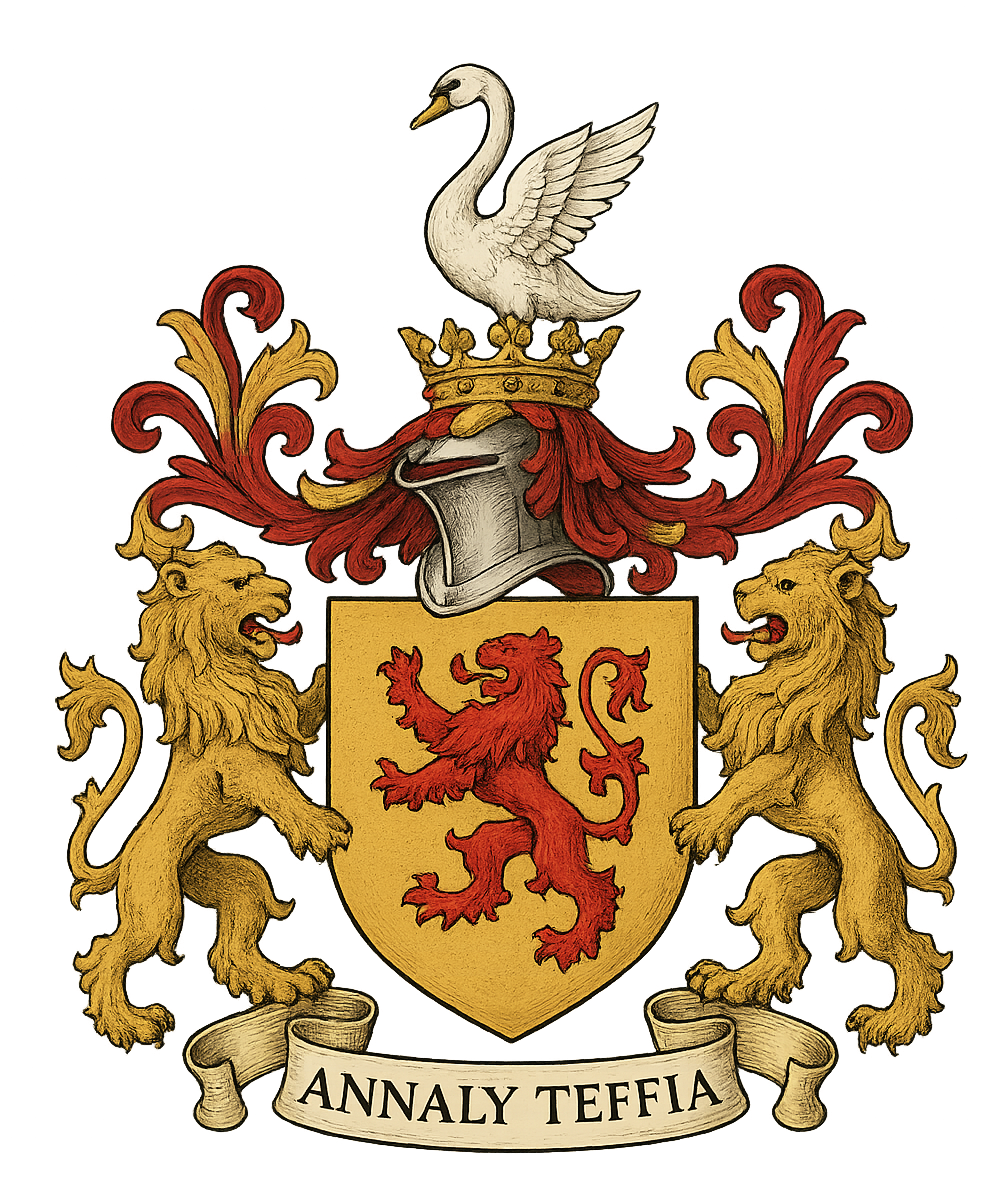
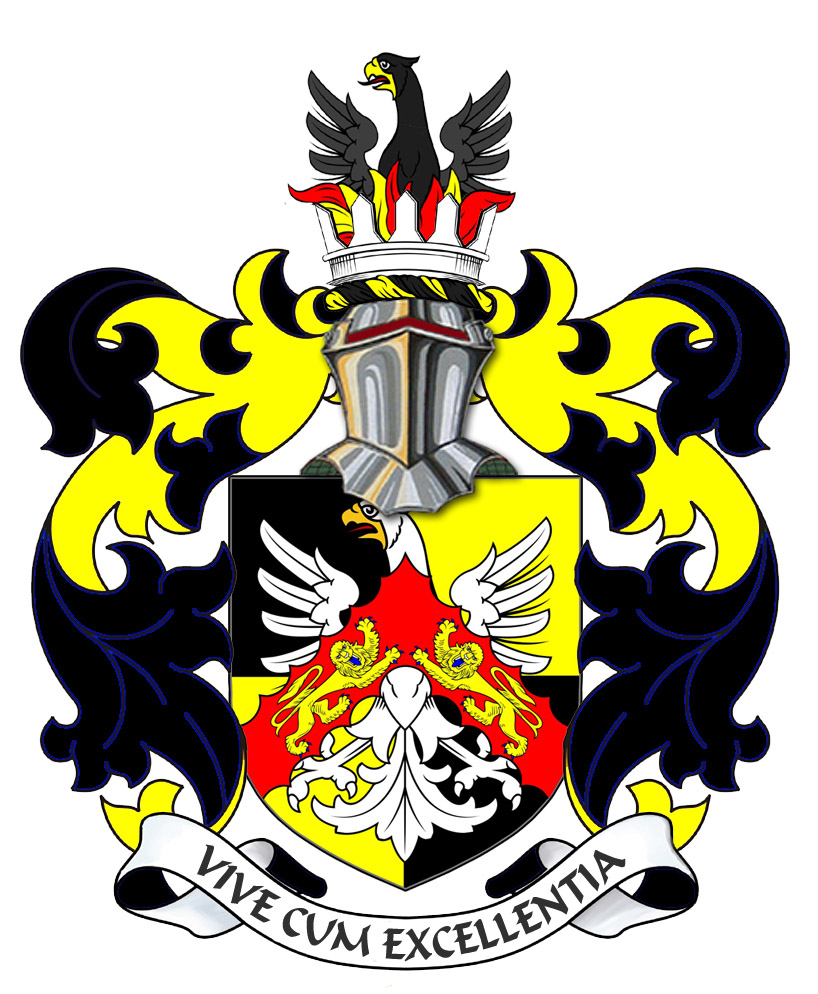
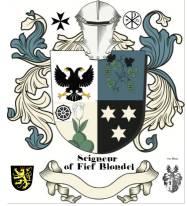


Commissioner George Mentz - George
Mentz Law Professor - George
Mentz Economist
George Mentz News -
George Mentz Illuminati Historian -
George Mentz Net Worth
The Globe and Mail George Mentz
Get Certifications in Finance and Banking to Have Career Growth | AP News
